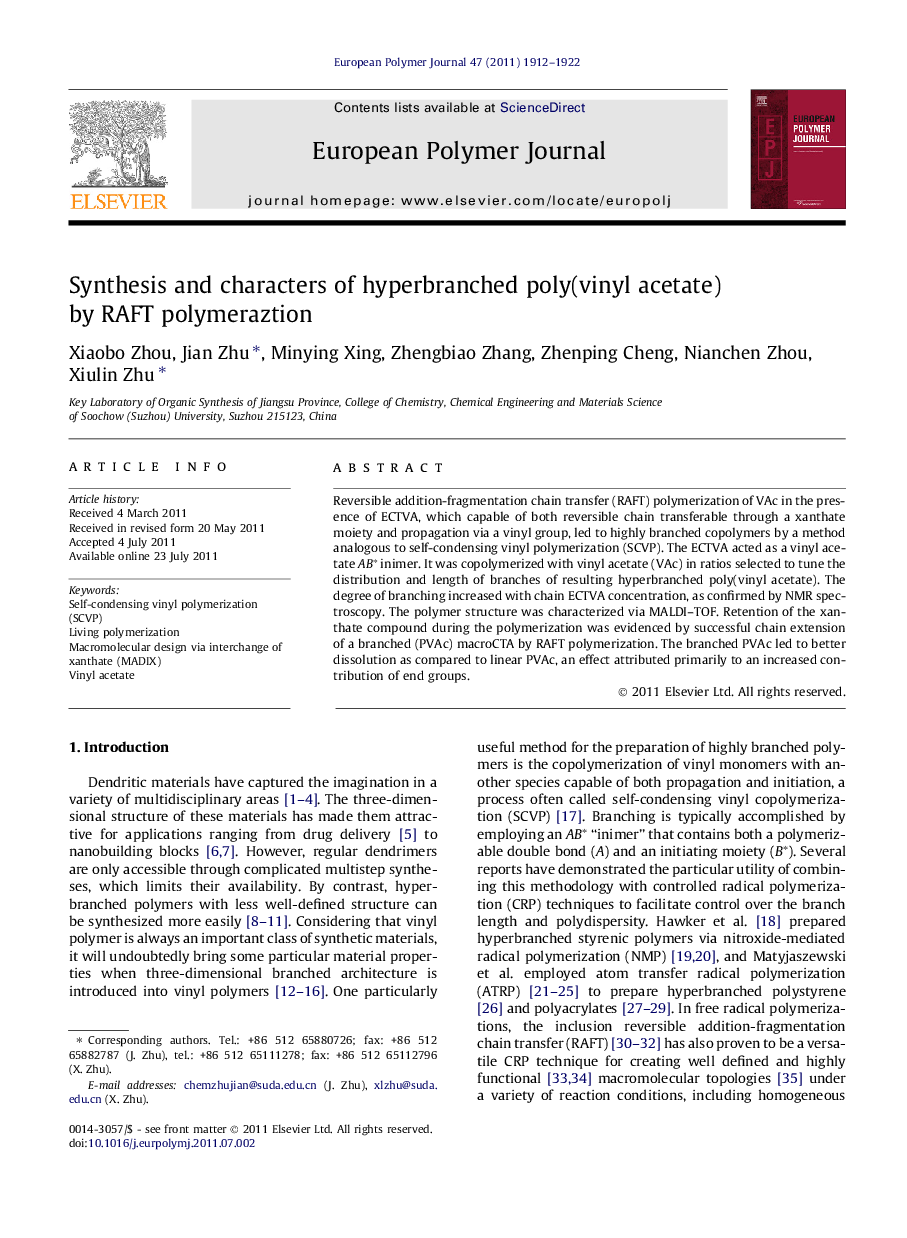| Article ID | Journal | Published Year | Pages | File Type |
|---|---|---|---|---|
| 1400665 | European Polymer Journal | 2011 | 11 Pages |
Reversible addition-fragmentation chain transfer (RAFT) polymerization of VAc in the presence of ECTVA, which capable of both reversible chain transferable through a xanthate moiety and propagation via a vinyl group, led to highly branched copolymers by a method analogous to self-condensing vinyl polymerization (SCVP). The ECTVA acted as a vinyl acetate AB∗ inimer. It was copolymerized with vinyl acetate (VAc) in ratios selected to tune the distribution and length of branches of resulting hyperbranched poly(vinyl acetate). The degree of branching increased with chain ECTVA concentration, as confirmed by NMR spectroscopy. The polymer structure was characterized via MALDI–TOF. Retention of the xanthate compound during the polymerization was evidenced by successful chain extension of a branched (PVAc) macroCTA by RAFT polymerization. The branched PVAc led to better dissolution as compared to linear PVAc, an effect attributed primarily to an increased contribution of end groups.
Graphical abstractFigure optionsDownload full-size imageDownload as PowerPoint slideHighlights► We synthesized hyperbranched poly(vinyl acetate) with controlled structures. ► Hyperbranched poly(vinyl acetate) was synthesized via MADIX. ► Detailed MALDI–TOF was used to character the structure of hyperbranched PVAc.
